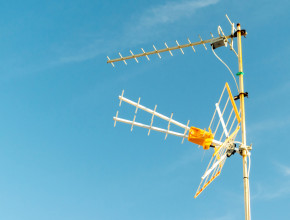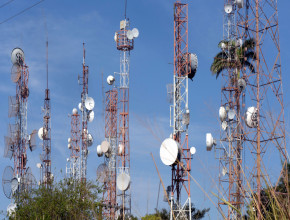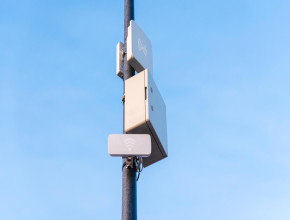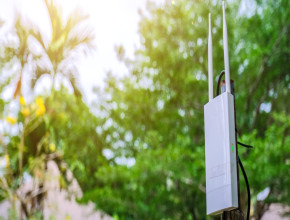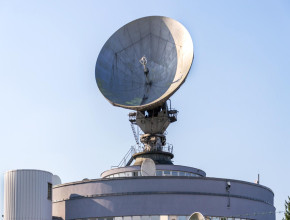
Have you ever wondered why radar antennas are mandatory in some industries, like aerospace, aviation, marine, militant, etc.?
No doubt, radar antennas play a significant role in modern life. It is a solution that allows us to detect things beyond usual methods.
If you are unfamiliar with this equipment, here is an easy-to-understand guide to learning the nuances of it.
In this guide, we learn about the essence of a radar antenna, its type, and the benefits it provides. So let’s get started here!
What is a Radar Antenna?
Every one of us likes to travel by different means of transport. You can travel by plane or ship, or you may have your own vehicle like a car. It is where a radar system is mostly used.
Radar antennas are an essential instrument in a radar system that aids in receiving and transmitting radio waves. The primary function of this tool is to identify and analyze the surrounding objects using radio waves.
Suppose you are on a boat in adverse weather conditions. In all such situations, radar antennas empower you to see objects like trees, hills, ships, or any other things that come into the range of your radar system.
These types of equipment are helpful for long-distance and all-weather conditions. It acts as a military antenna. You can also see them in aircraft, ships and boats, satellite ground vehicles, aerial vehicles, drones, etc.
Types of Radar Antenna
Due to the versatility of this wireless equipment, you can find them in many industries. From coverage, beam ability, and frequency range, their diverse characteristics make them suitable based on the specific purpose and requirements of the systems. Let’s explore some significanttypes of radar antennas that we commonly use in our system:
Parabolic Antenna
Grid parabolic antenna is a well-known radar antenna. It can communicate with microwave frequencies. It has a large parabolic reflector, from which its name comes.
Its dish-shaped reflector helps to reflect more radio waves and facilitates the seamless transmission of signals even in crowded areas.
Because of its directional nature, grid parabolic antennas are suitable for long distances where focusing on a specific direction is required.
The ability to communicate with microwave and ultra-high frequencies makes it the best choice for multiple systems. Its high gain capability allows precise connections between two points.
You can use this transmitter in satellite, telecommunication, radio astrology, and many other places.
Horn Antenna
A horn antenna can be identified by its horn-like structure. It is a directional antenna that is mainly used for targeting short-range microwave signals.
Its low side lobes make it a unique equipment from the rest. It enhances radio waves' focus and avoids distraction from unwanted signals.
These tools are employed in systems where high gain and a stable signal are the top requirements. It can cover a wide range of frequencies, which makes it a suitable option for integrating over long distances.
Whether it is satellite communication, radio astronomy, or military aviation, you can use this tool for better results.
Phased Array Antenna
A phased array antenna is made up of a group of antennas. It is known as directional antenna and specialized in sending or receiving signals in a specific direction. Its electronic beam steering feature enables it to act like a flashlight that can point its beam without moving its entire body.
The adaptive nulling allows it to concentrate on specific signals without distractions from other unwanted signals.
This device helps in providing top-notch connectivity and coverage. Therefore, it is helpful in satellite communications, telecommunications, and other crucial sectors.
A phased array antenna is handheld equipment in radar systems on ships, airplanes, 5G technology, and other wireless communication systems.
Array Antenna
An array antenna is designed with a small group of antennas that aim to provide radiation patterns.
In contrast to regular equipment, this equipment has a group of radiators because a single one cannot produce radiation patterns.
These are better wireless tools than the usual ones. They cover up the problems that are caused by single transceiving tools.
Array antennas establish a seamless connection between two points. You can see them in radar systems, wireless communication systems, medical imaging, and many other purposes.
Conformal Antenna
This is an additional form of phased array antenna. Due to its conformal nature, it comes in diverse forms.
Its unique engineering makes it able to integrate into curved surfaces.
This wireless device holds a multitude of shapes and sizes. You can control its gaining power and select the shape that fulfills your requirements.
It is specially designed for aerospace, wearable devices, gadgets, etc.
Benefits of Radar Antenna
Radar antennas play a crucial role in different industries. These are the mediums used to detect unknown objects over long distances. These help us to transmit or receive singles even in harsh environmental conditions. Let’s check out some of the most crucial benefits of radar antennas in our lives:
- Detection and Tracking: This is the most prominent benefit of radar. We can detect and track various objects that are not within our reach. They provide crucial information in the situation of surveillance and emergencies. It makes sense to use it in defense, aviation, marine missions, and other purposes.
- Navigation and Guidance: Whether in the aerospace or marine industries, radar antennas act as beacons of hope, help in navigation, and guide pilots and ship captains. They help us know the unknown, avoid objects, and ensure that we have a safe journey.
- Weather Monitoring: With the help of radar, we can predict weather situations. We monitor the atmospheric conditions and enhance our understanding of weather patterns. Today, transceiving tools play a significant role in forecasting storms, rain, and other conditions.
As we see, radar antennas are an essential part of a radar system. These are compact and long-lasting structures. It helps with robust communication, transmitting information, and ultimately connecting two points. Today, the world uses these transmitters and receivers for many purposes. Whether it is personal or public, different individuals or organizations take advantage of the benefits in every possible direction.

